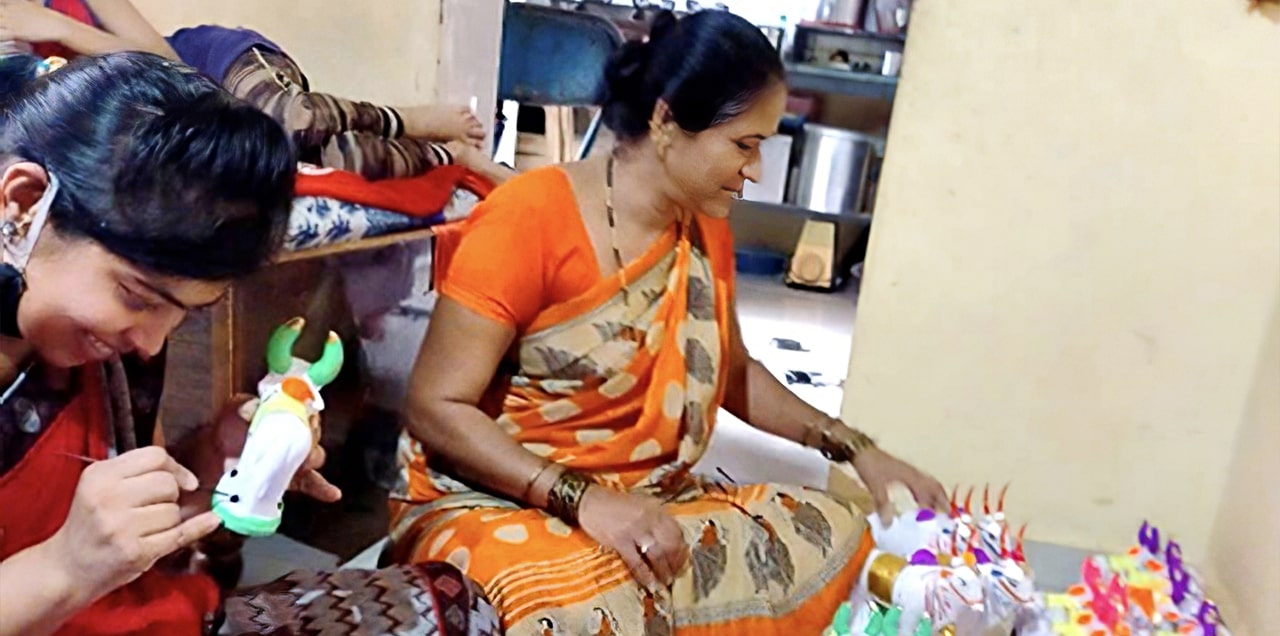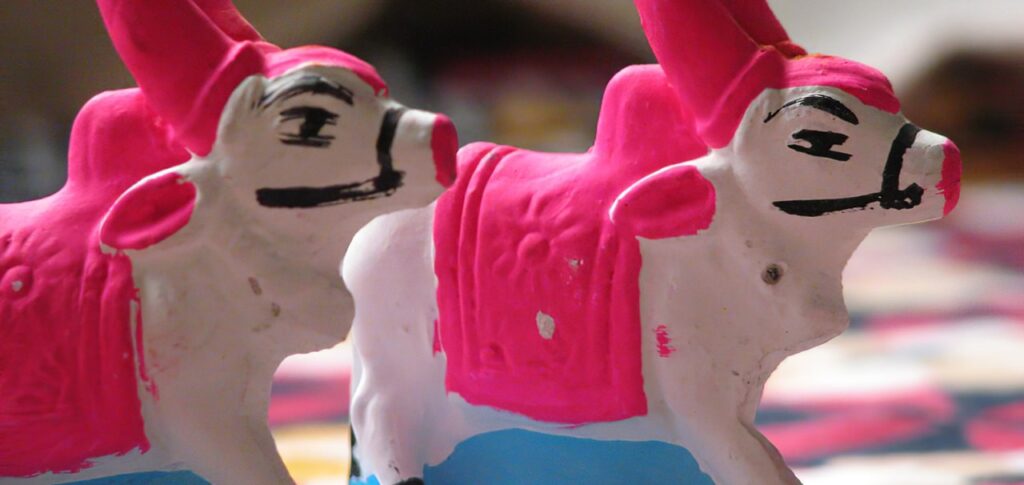Written by Jarina Shaikh and Jyoti Baiballi from LEARN, India.
Maharashtra’s farmers usually celebrate the festival ‘Pola’ in August, a festival to celebrate, worship and thank their bulls and oxen that labour on their fields round the year. Starting a few days before Pola, the animals are washed, coloured, and decorated with bells and colourful garments. These 3-4 days are a period of rest for the animals, as they are not expected to work. On the day of Pola, the bulls and oxen are worshipped and fed delicacies.
The slums of Nashik city are filled with rural migrants from several villages of Maharashtra. Even though they do not have livestock in their city dwellings, their cultural roots tie them to honouring and practising all the seasonal festivals and rituals performed in their villages. How do they celebrate Pola in the cities? This is where women homeworkers like Anita come in. Forty-year old Anita lives with her husband and two children (10 year old daughter and 5 year old son) in Nashik’s Bhagwati Chowk area. They begin their work six months before Pola, and the three months preceding the festival is the busiest time of their year.
Image – Myfestives.wordpress.com
Anita and her daughter make small idols of bulls from a mixture of clay and cow dung. The process, which starts five to six months before Pola, is laborious and takes a long time. The first step starts with Anita buying clay and cow dung, which are mixed and left to soak for three months. After three months, the clay cow dung mixture is divided into small round balls. Then, each of the balls are shaped to make the replicas of various parts of the animal’s body — the horns one day, the legs the next day, the tail another day and so on. Only one part of the body can be shaped in one day, because it needs to be set perfectly. After all the parts are completed, they are put together and the full body of the bull is assembled. Anita and her daughter then sit for hours painting different colours on the various parts of the body of each clay bull. From start to finish, this process takes 8-10 hours of work every day for five months before it enters the market for sale, starting a month before Pola. Anita’s family incurs a cost of approximately Rs. 5000 to make 250-300 bull idols, which are always sold in pairs. Each pair of bulls is sold for Rs. 50. In a good year, they are able to earn a net income of Rs. 10000-12000. Their sales took a major hit during the COVID-19 pandemic related lockdown.
One must note that each of the materials used in this process is natural— clay, cow dung, natural plant based colours. Not only are women like Anita preserving the cultural heritage of rural Maharashtra in the urban areas, they are doing so by carefully preserving the environment. Once the festival is over and the bull idols are discarded, they go back to the earth as fertiliser and mulch. Zero waste and 100% recycling naturally.
However, Anita’s efforts are neither recognised nor appreciated. Furthermore, this work also causes some OSH issues, at different stages of the process. The most common ailment is severe backache and pain in the eyes, due to continuous sitting and intense concentration required to sculpt and paint each part of the bull idol. They sit on the floor with folded legs for long hours and their posture is not good, especially in the painting stage which requires them to slouch for hours and strain their eyes for intricate work.
When asked what she thinks about the problems with her work, Anita says, ‘our work does not get valued… the work of Kumbhar (potters) never gets valued.’ This is an important point raised by Anita, because home based workers in traditional arts often suffer from invisibility, lack of recognition and their work almost never gets counted, all of which could cause alienation.
When asked about what her union and the government could do for her, Anita says, ‘I want my union to always be with me. I feel like I am finally visible, people want to hear what I have to say. That means a lot.’ About the government she says, ‘The government could help me get recognition and proper value for my Kumbhar (pottery) goods.’




